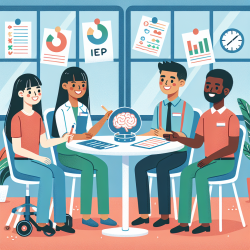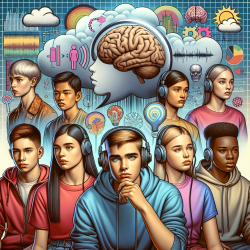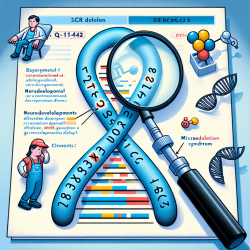Individualized Education Program (IEP) planning and meetings can be daunting for many occupational therapists. The process involves collaboration, meticulous documentation, and a clear understanding of each student's unique needs. At TinyEYE, we understand the complexities and challenges that come with this critical aspect of special education. In this blog, we'll uncover five secrets to make your IEP planning and meetings more effective and less stressful.
1. Start with a Comprehensive Assessment
Before diving into IEP planning, ensure you have a thorough understanding of the student's current abilities and challenges. Conduct comprehensive assessments that cover all relevant areas, including fine motor skills, sensory processing, and mental health considerations. This foundational step will provide a clear picture of the student's needs and help you develop targeted goals.
2. Collaborate with a Multidisciplinary Team
IEP planning is a team effort. Collaborate with teachers, parents, speech therapists, and other professionals involved in the student's education. Regular communication and meetings with the multidisciplinary team will ensure that everyone is on the same page and working towards common goals. This collaboration is especially important for addressing complex needs that may require input from various experts.
3. Set SMART Goals
When developing IEP goals, make sure they are Specific, Measurable, Achievable, Relevant, and Time-bound (SMART). Clear and well-defined goals will provide a roadmap for intervention and make it easier to track progress. For example, instead of setting a vague goal like "improve fine motor skills," aim for something more specific, such as "the student will improve pencil grip and handwriting legibility to 80% accuracy within six months."
4. Utilize Online Therapy Tools
In today's digital age, online therapy tools can be a game-changer for IEP planning and implementation. Platforms like TinyEYE offer a range of resources, from virtual therapy sessions to digital assessment tools, that can enhance your ability to provide effective interventions. Online therapy can also facilitate better communication with parents and other team members, making it easier to coordinate efforts and track progress.
5. Involve Parents in the Process
Parents play a crucial role in the IEP process. Their insights and observations can provide valuable information about the student's needs and progress outside of the school environment. Involve parents in every step of the planning process, from initial assessments to goal-setting and progress reviews. Regular updates and open communication will help build trust and ensure that everyone is working together to support the student's success.
In conclusion, effective IEP planning and meetings require a combination of thorough assessments, multidisciplinary collaboration, SMART goals, innovative tools, and active parent involvement. By implementing these strategies, occupational therapists can create more effective and individualized plans that truly meet the needs of each student. At TinyEYE, we are committed to supporting you in this important work through our comprehensive online therapy services.










